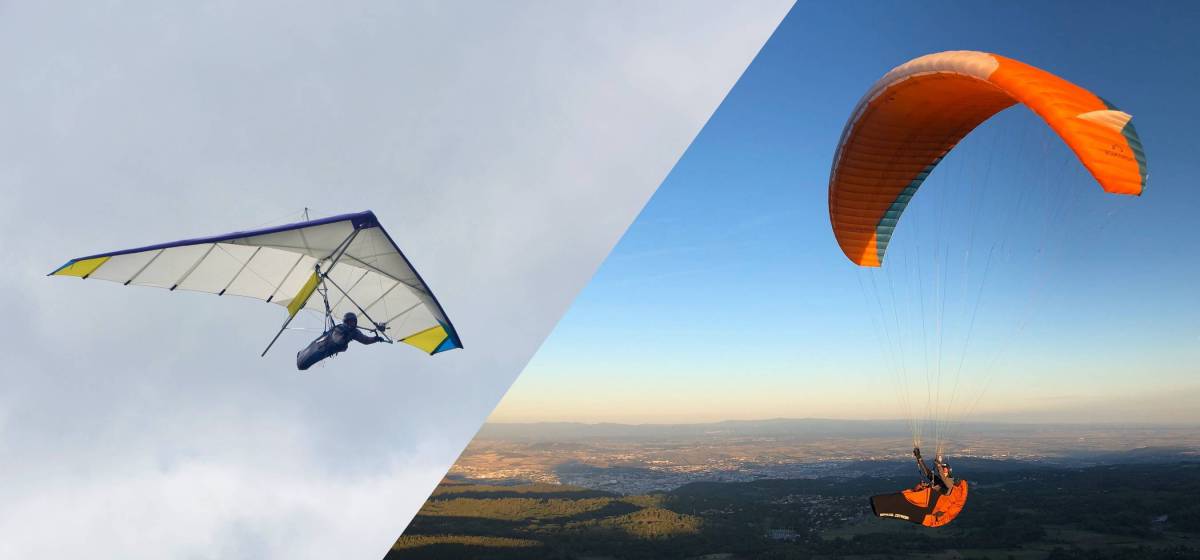
Freedom tells you all about these 2 flying wings so different....
Often confused by many people, these terms are both part of the practice of free flight, defined in Europe by a flying machine without an engine and which can be taken off by the sole muscular force of the pilot. And yet, this definition includes very different machines...
Paragliding is a device from the world of skydiving. It is made up of a canopy (also called a wing) with a surface area adapted to the weight of the pilot + equipment, a harness in which the pilot sits and a reserve parachute as well as all the lines that link all these elements together.
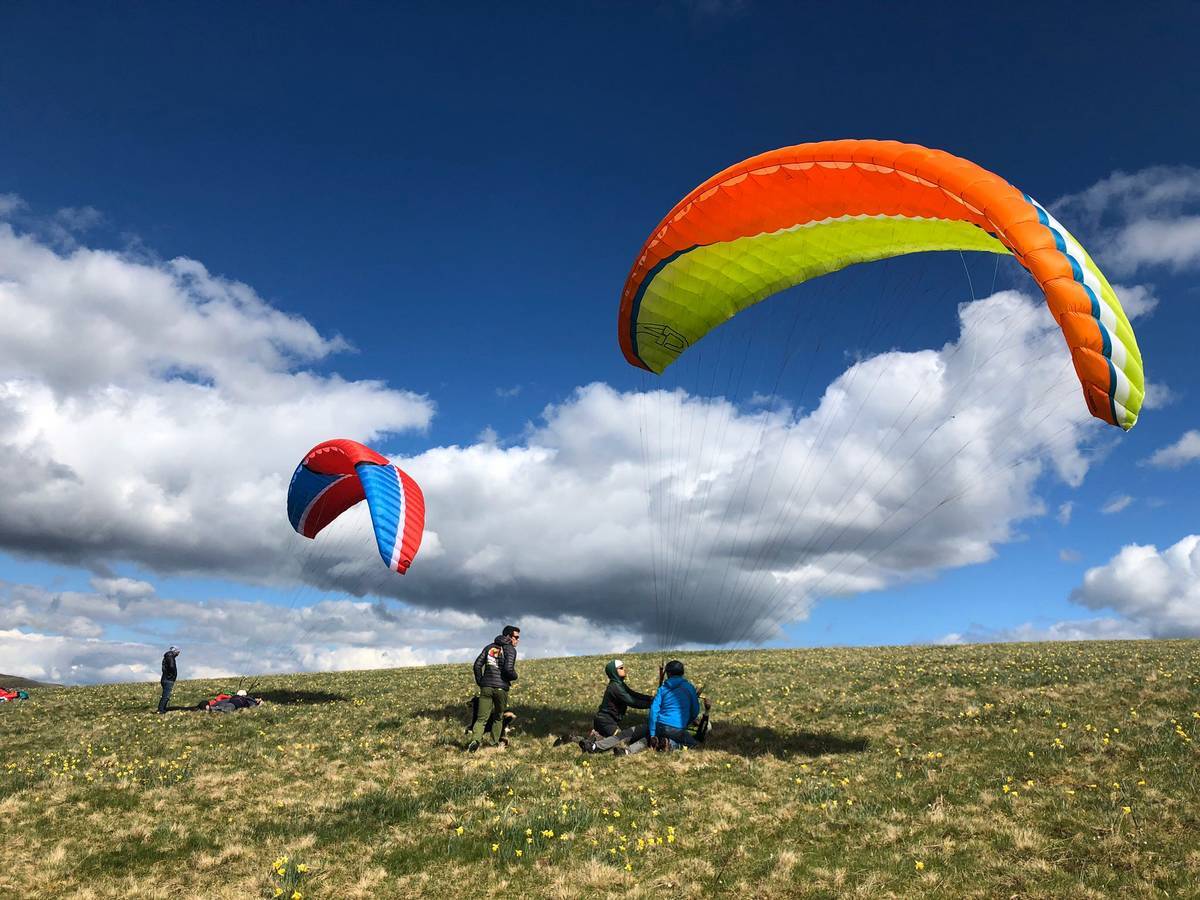
We have to go back to 1965 to discover the ancestor of today's paraglider: David Barish's sailwing, a very basic single-surface wing. At the same time, Domina Jalbert developed a double surface boxed parachute: the parafoil, the ancestor of paragliding, which was then used for aeroplane jumps!
In France it is in the 70's that paragliding will emerge in Haute Savoie, in Mieussy thanks to the Annemasse paraclub. The idea was then to take advantage of these new parachutes while taking off from the mountains, to train at a lower cost and to perfect one's landings. These parachutes are delicate to inflate and the take-offs are rather moving. It was not until 1985 that the first wing dedicated to paragliding appeared: "La Randonneuse" signed Laurent de Kalbermatten. 2 years later, in 1987, the first world championships were held in Verbier, Switzerland,
The incredible story of paragliding is then launched!
Like paragliding, hang gliding, also known as hang gliding, is a flying machine without an engine and can be taken off on foot. It owes its name to its triangular shape, reminiscent of the capital Greek letter Δ.
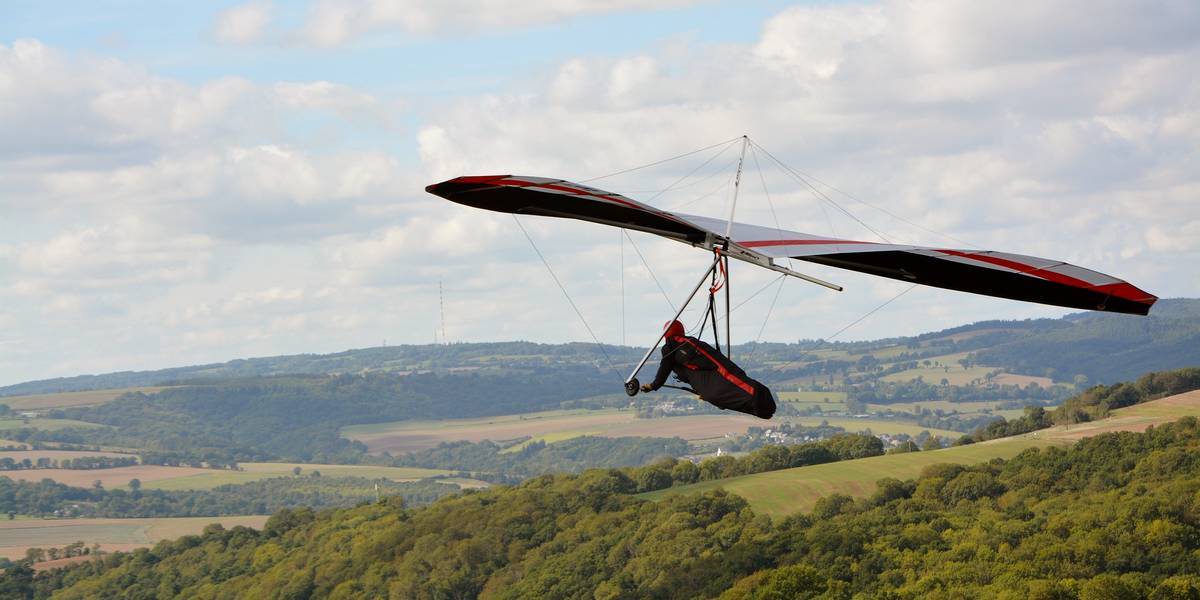
The hang-glider, or rather its ancestor signed Albert Berlinger, appeared very early in 1811 and was improved in 1890 by Otto Lilienthal. But it was especially during the conquest of space that work on the hang-glider was most intense. NASA was looking for the best way to glide the space capsules after their re-entry into the atmosphere. In the end it was the classic parachute that won the day, but the hang glider was propelled to the forefront. In the 1960's we find pioneers such as the Australian Bill Moyes who made the first hang glider free flight in history. Many challenges were then born: flying over the Statue of Liberty in New York or the Eiffel Tower in Paris.
But it was in 1973 that the Frenchman Christian Paul-Depasse, with his company Delta, registered the first brand of hang glider in the world: the DELTA-PLANE brand, which has since given its name to this flying aircraft.
Since then the hang glider has been constantly improved with double surface constructions which improve lift (flat lower surface, curved upper surface like on an aircraft wing), new lighter composite materials with a rigid structure which no longer need masts and stays. Hang glider pilot training has also seen the light of day and the practice has been democratised.
If the beginnings of both disciplines were rather rock'n'roll and reserved for pioneers, this is no longer the case today with aircraft that have reached their full maturity and a maximum level of safety. The risks are a little different between the two machines. The paraglider flies thanks to a flexible profile conditioned by its speed relative to the air mass. Therefore it is possible that in case of strong aerological turbulence this shape may be damaged and the glider may stall or go into a parachute. This is why modern paragliders are all designed to quickly return to their original shape after a flight incident as soon as they regain airspeed. Hang-gliders are much faster and are therefore less sensitive to turbulence, but may require more precision and concentration both in their aerial evolution and in their approach during landings. In any case, both types of aircraft are equipped with emergency parachutes which prevent any major problems in flight.
In terms of performance, it is the hang glider that outperforms the paraglider with a glide ratio greater than 18 for the most recent hang gliders, whereas paragliders are more like 10 or 11. The hang glider is also capable of flying in stronger wind conditions, whereas in paragliding it is technically no longer possible to take off when the wind exceeds 30km/h, otherwise it will take off in reverse mode.
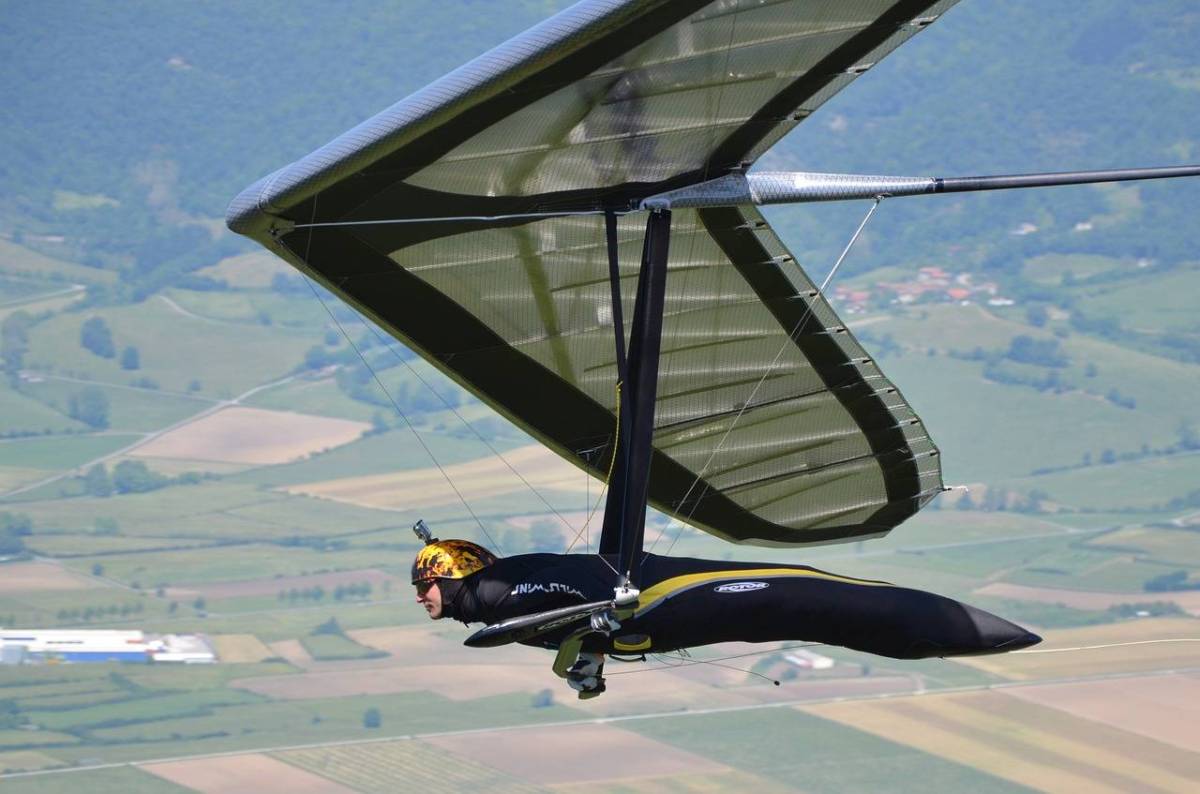
This is a very interesting point which will clearly make the difference between the two machines and which partly explains the expansion of paragliding and the progressive decline of hang-gliding. Paragliding is derived from parachuting. As indicated above it is made up of a flexible canopy, lines and a harness, all of which is stored in a large rucksack weighing around 15 kg for classic paragliders and around one kilo for the lightest in the world. In other words, a paraglider is easy to carry everywhere and can be easily stored in the boot of a car.
For hang gliding, the problem is quite different. The structure is rigid and exceeds 4 metres in length and the weight of a hang glider exceeds 25 Kg! That's why hang gliders often opt for a station wagon or an extended vehicle with a roof support ladder to carry their flying machine!
And if climbing a summit with a paraglider on your back is something everyone can do, doing it with a hang glider is a feat and deserves to be highlighted!
In paragliding, the pilot sits in a hammock and flies with his arms raised. His legs can be tossed under the harness or stretched out in an aerodynamic cocoon to reduce drag and improve glide. In tandem paragliding, the pilot is usually high behind and the passenger in front underneath.
In hang-gliding the pilot lies down for the entire flight with the socks on the bar and enjoys a more birdlike experience. In tandem hang-gliding the pilot and passenger are side by side.
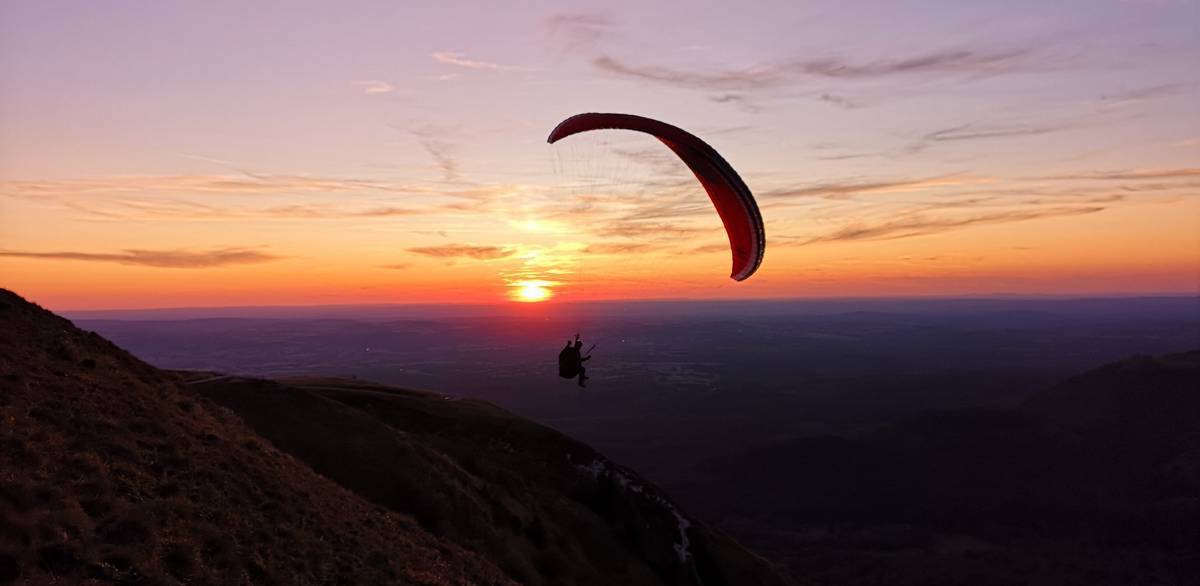
The price of a paragliding experience and a hang gliding experience are roughly the same and start at around 80€ excluding additional options such as video and can go up to 140-150€. The same goes for the initiation courses which lead to the first solo flights, even if in practice the learning of paragliding is much more intuitive and allows you to fly in safety more quickly.
Whether paragliding or hang-gliding, the sensation of flying without any engine noise remains a magical and unique sensation. You can then discover the landscape scrolling under your feet, you can feel the wind on your face and the slightest variation in lift due to the thermal currents generated by the sun.
Paragliding offers more accessible basic sensations: you are seated, you fly between 30 and 40 km/h, there is no sensation of vertigo, you have the impression of being in a hammock chair and on a swing at the same time. It is ideal for contemplative people and for a first free flight experience. But paragliding can just as well provide breathtaking sensations when you go into aerobatic mode or for an adrenaline rush baptism of paragliding: 360°, wing-over, tight turns, nose-downs to the ground and candles to the sky will quickly make you lose the notions of up and down and forward and backward movement.
Hang gliding is two to three times faster than paragliding and the flight is made longer, which further increases the feeling of speed. Its aerial manoeuvres are also more impressive. A first flight in a hang glider is therefore recommended for thrill-seekers!

